How do I pick the right shaft for me? Woods edition
With the increased availability of custom fitting in golf over the last decade or so, the importance of the shaft is something that has become a larger and larger part of the conversation when it comes to optimising your numbers. The list of shafts that you can put into your clubs nowadays is huge, so how are we able to sift through the options and find the ideal shaft for your game? In this 2-part series we’ll be looking into the dark arts of shaft fitting. Today we’ll be focussing on your woods. If you haven’t read the previous edition, where I talked about fitting shafts for irons, then check it out here.
When I talked last about iron shafts we covered the flex, bend profile and weight of your shafts and how they will help or hinder you in optimising your ball flight and while much of the topics are the same, with your woods requiring a different swing and often seeing very different results from your irons, it’s important to view your wood shafts as a separate topic in terms of the fit. Similarly, to with your irons, the parameters we will tend to focus on in terms of ball data will be launch, spin and ball speed. These three will dictate if you have a driver that is optimised for you and therefore set up to maximise your distance. With all the technology and design that goes into the clubhead, it’s important to make sure the shaft doesn’t work against that. As different shafts can promote different ball flights. Depending on your requirements, let’s say for example reducing spin, you’ll need a different shaft because as effective as the head can be in reducing spin, a shaft with a tip that’s too soft or with a weight that allows you to present too much loft at impact can totally undo what the head is trying to achieve. This is where using Trackman can tell us how a shaft changes your delivery and impact location which is vital in making sure you’re squeezing every possible yard out of your driver.
An increasingly common theme in fitting is the appearance of aftermarket shafts which can sometimes be significant upcharges on the stock shafts offered by a manufacturer. So is it worth it? Well having a wider range of shafts to choose from is rarely a bad thing and often there are interesting options in the upcharge market. Such as with the Fujikura Ventus Shaft, where they offer VeloCore technology which is a more stable option for faster swing speeds which can increase MOI (forgiveness) and ball speed at which can give you more consistent strike and distance. However, manufacturers do work hard to make sure that they provide a range of shafts that cover every style of swing speed and tempo without having to shell out an extra £100 plus. So these upcharges are often only absolutely necessary in specific circumstances and most of the time you’ll be able to find a stock shaft that suits your needs due to the increased range that’s now offered.
But should you match your driver to your fairway? Depending on how you use your fairway there can be benefits for matching. If you find similar flights with your driver and fairways and want to match up the feel, particularly if it’s in a 3 wood that you exclusively use off the tee for example. But lets say you have a 5 wood that you want as an option off the deck and into greens. There’s a good chance that if you have a driver shaft geared for distance, you’ll want a different flight out of the 5 wood, with more launch and spin to give you stopping power so looking at that as a separate fitting is important so you can effectively evaluate your needs for every club correctly.
So there we have it, your comprehensive overview for wood shaft fitting. It cannot be stressed enough though, all of this information gives you the knowledge of where to start, but without hitting it on a launch monitor it’s impossible to know if a shaft truly works for you. So if you think your current shafts aren’t ideal or you just want a change, come and get fitted and see the benefits.
Jim Mitchell
Custom Fit Specialist
Peter Field Golf Shop



